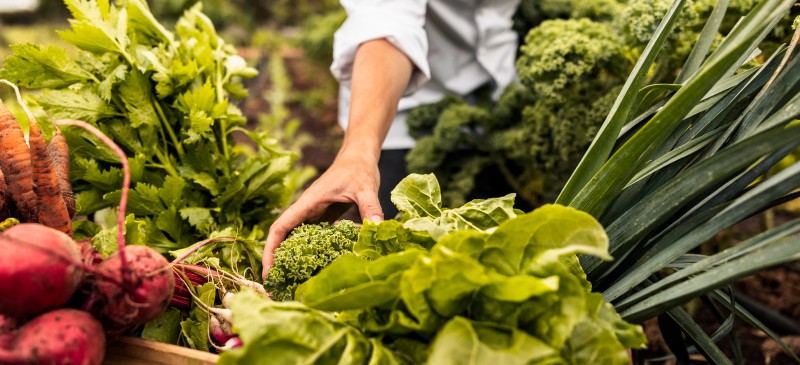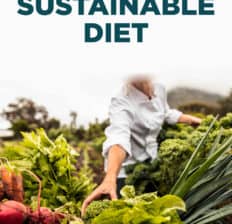This Dr. Axe content is medically reviewed or fact checked to ensure factually accurate information.
With strict editorial sourcing guidelines, we only link to academic research institutions, reputable media sites and, when research is available, medically peer-reviewed studies. Note that the numbers in parentheses (1, 2, etc.) are clickable links to these studies.
The information in our articles is NOT intended to replace a one-on-one relationship with a qualified health care professional and is not intended as medical advice.
This article is based on scientific evidence, written by experts and fact checked by our trained editorial staff. Note that the numbers in parentheses (1, 2, etc.) are clickable links to medically peer-reviewed studies.
Our team includes licensed nutritionists and dietitians, certified health education specialists, as well as certified strength and conditioning specialists, personal trainers and corrective exercise specialists. Our team aims to be not only thorough with its research, but also objective and unbiased.
The information in our articles is NOT intended to replace a one-on-one relationship with a qualified health care professional and is not intended as medical advice.
Sustainable Diet Plan, Foods, Benefits and More
March 6, 2023

“Sustainable living” is a big buzzword today, leading many to wonder how to follow a sustainable diet. What is sustainability exactly, and how should it impact the types of foods you choose to eat?
Sustainability is defined as “the ability to be maintained at a certain rate or level.” Another definition is “avoidance of the depletion of natural resources in order to maintain an ecological balance.”
Therefore, following a sustainable diet is all about eating in a way that doesn’t negatively affect the planet or other people. While we usually associate sustainability with environmental concerns, a truly sustainable diet also takes into account economic and social consequences of eating various foods.
What Is a Sustainable Diet?
A sustainable diet is any type of diet that can be maintained without having negative impacts. This sounds a bit vague, so let’s go into more detail…
Sustainable diets include ethical, social and economic aspects. These are considered the three pillars of sustainability. This means that a sustainable diet must not harm the ecosystem, food supply or the general population.
The United Nation’s Food and Agriculture Organization explains sustainable eating in the following way:
Sustainable Diets are diets with low environmental impacts which contribute to food and nutrition security and to healthy life for present and future generations. Sustainable diets are protective and respectful of biodiversity and ecosystems, culturally acceptable, accessible, economically fair and affordable; nutritionally adequate, safe and healthy while optimizing natural and human resources.
Sustainable Diet Benefits for the Planet and Your Health:
How can making dietary changes impact the environment? Some of the main environmental benefits of sustainable diets include:
- Producing significantly less greenhouse gas emissions, which helps combat climate change.
- Decreasing deforestation and destruction of land.
- Reducing the amount of energy, water, fuel and other resources that are used up when producing, processing and shipping foods.
- Improving the quality of topsoil, including the amounts of nutrients found in soil that is then transported into our food supply.
- Decreasing food waste.
- Reducing landfill and pollution.
- Supporting local farmers and economies.
- Ensuring there’s enough food and resources in the future for the world’s growing population.
Is this a healthy way to eat? Can a sustainable diet help with weight loss?
Most environmentally sustainable diets are also good for your health, considering they encourage eating lots of seasonal and local produce and deemphasize packaged and ultra-processed foods.
Yes, if you follow the tips below for eating an environmentally friendly diet, you’ll likely control your calorie intake more easily and consume plenty of high-fiber foods, which are filling and great for gut health.
A sustainable diet is also a good way to decrease your intake of added sugar, salt and refined oils/fats, which can contribute to overeating and weight gain. This approach can help lower your risk for chronic health problems, such as cancer, heart disease, type 2 diabetes, obesity and stroke.
Related: What Is the Nordic Diet? Benefits, Meal Plan & What You Can Eat
Best Diets for Sustainability
There’s more than one way to eat sustainably, which is why people take different approaches to reducing their carbon footprints, giving back to the environment and supporting the global economy via their diets.
Contrary to what you might assume, you don’t need to eat a strictly vegetarian/vegan diet to eat sustainably.
You can eat like a “conscious carnivore” and include meat, dairy, fish, etc., in your diet and still eat sustainability. The key is to choose the right types of animal and plant foods that deplete less resources and produce less greenhouse gas emissions.
One difference between a strictly vegan/plant-based diet and a sustainable diet is that sustainability takes into account greenhouse gas emissions from different foods, biodiversity and foods’ nutritional values.
It could be argued that vegan diets are hard to maintain/sustain for many people, and they pose a greater risk for certain nutrient deficiencies, meaning they aren’t necessarily the most sustainable option.
Some of the best diets for sustainability include:
- Plant-based diet — Plants generally cause fewer adverse environmental effects compared to animal foods. A plant-based diet includes mostly plant proteins, such as legumes, seeds and whole grains, but might also include small amounts of animal proteins, such as eggs or dairy, depending on the specific type. Vegan and vegetarian diets fall into this category.
- Mediterranean diet — This healthy eating pattern encourages lots of plant foods and plant proteins, especially veggies, whole grains and olive oil, but also includes some seafood, dairy, eggs and small amounts of meat. It’s basically a type of “flexitarian diet” and can also be a pescatarian diet or semi-vegetarian diet depending on which animal foods are included, such as eggs, dairy and fish but no meat.
- “Climatarian diet” — This eating plan is very similar to a sustainable diet or plant-based diet. It focuses on the environmental impacts that different foods have, emphasizing those that are more sustainably produced, while limiting others that deplete resources and damage the environment, especially beef/red meat. It encourages mostly plant proteins but allows for small amounts of poultry, dairy, free range eggs and some sustainable fish/seafood.
How to Follow a Sustainable Diet Plan
Sustainable Diet Plan Overview:
According to experts who study the connection between diet choices and environmental and economic impacts, here’s how to eat more sustainably:
- Focus on variety and diversity. Eat a lot of different foods, including a mix of plant and animal foods (unless you prefer a vegetarian diet).
- Control portion sizes, especially of foods that have a higher environmental impact. Balancing your calorie (energy) intake with your energy needs also helps prevent weight gain and obesity, which cost developed countries billions of dollars every year.
- Eat more low-cost foods that are easy to grow, including unprocessed potatoes, roots and tubers; legumes and beans; whole grains; and season/local fruits and vegetables that aren’t sold in plastic packaging or flown in from far away.
- Eat meat in moderation, and choose meat that is grass-fed and sustainability raised. Avoid factory-farm beef and processed meats.
- Eat “from nose to tail,” meaning all animal parts, such as organ meats, rather than just premium cuts of meat.
- Include small quantities of fish, seafood and aquatic products in your diet each week, specifically types that are more eco-friendly. Avoid fish you should never eat that are depleted and potentially contaminated.
- Consume dairy products in moderation, or opt for alternatives such as plant-based milks to reduce dairy consumption.
- Eat a variety of seeds and nuts, which provide healthy fats and minerals. Olive oil is another sustainable source of healthy fat.
- Limit consumption of processed foods, especially those made with refined or trans fats, added sugar, additives, and GMOs.
- Make filtered and tap water your No. 1 beverage choice. Avoid soda, soft drinks and other sugary beverages. (Believe it or not, soft drinks and fruit juices are the third biggest contributors to dietary greenhouse gas emissions!)
- Recycle and compost food waste, which puts it to good use creating healthy topsoil and feeding domesticated animals.
- Using less plastic, such as food containers and water bottles, and instead utilizing reusable materials, like glass bottles.
Foods to Eat
The bottom line when it comes to sustainable eating is you want to eat more plant foods (like beans, lentils, nuts, seeds) and less meat, especially meat that isn’t grass-fed.
The food groups below are considered to be the most sustainable. Therefore, plan your meals around these ingredients:
- Locally grown, organic vegetables and fruits, especially leafy greens, apples, oranges, bananas, carrots, celery, onions, potatoes/tubers, mushrooms, okra, broccoli and squashes, which require little resources to grow. Choosing organic produce whenever possible results in fewer pesticides added to the soil.
- Sprouts and grasses, such as alfalfa and sprouted beans.
- Bean and legumes, such as lentils, black beans, mung beans, pinto beans, kidney beans, fava beans and organic tofu.
- Whole grains, such as rice, teff, millet, rye, barley, spelt, fonio and sorghum.
- Some nuts and most seeds, such as walnuts, flax, chia, hemp, sesame, hazelnuts, sunflower seeds, watermelon seeds and pumpkin seeds.
- Wild-caught anchovies, sardines, herring, tuna, pollock, cod and haddock. Wild salmon and tuna fall somewhere in the middle, since they still have a climate impact but not as much as other seafood.
- Mollusks, like mussels, clams, oysters and scallops.
- Organic milk from grass-fed cows is OK in moderation. This type of dairy is more sustainable than chicken, eggs or pork per pound. Yogurt, cottage cheese and cream cheese have a similar climate impact as milk.
- Free-range eggs.
- Certain types of algae and sea vegetables.
- Bison meat and, in small amounts, free-range chicken or grass-fed meats.
Sustainable Diet Recipes:
You don’t have to completely overhaul your diet to help support the environment, local ecosystem and economy. Instead, start by making two to three changes, such as subbing out meat for beans and shopping for more local and seasonal veggies — then keep improving from there.
Here are some healthy recipe ideas using sustainable foods:
- Tuscan White Bean Soup
- Soft & Chewy Vegan Oatmeal Raisin Cookies
- Vegetarian Egg Caserole
- Cauliflower Pizza Crust Recipe with Garlic
- Quinoa Stuffed Peppers
- Kale Caesar Salad With Salmon
Regenerative Farming and Sustainability
Agriculture is the largest cause of global environmental change. About one-third (34%) of all man-made greenhouse gas emissions are caused by agriculture and food systems.
Creating enough food for a growing planet is a very challenging job, as growing crops and raising livestock, food distribution, processing methods, and transportation all require lots of energy and natural resources (including land, water, electricity and oil).
Regenerative agriculture (or regenerative farming) is a practice of growing food, trees and other plants, plus ranching “in harmony with nature.” This approach helps reverse climate change by rebuilding organic soil matter, restoring degraded soil biodiversity, limiting carbon emissions and improving the water cycle.
Not only does regenerative farming cause less damage to the environment and local ecosystems than traditional farming, but it actually improves soil quality and benefits the land and climate.
Some of the main components of regenerative farming include:
- avoiding use of pesticides, chemical fertilizers, fumigants and GMOs
- grazing and moving livestock from one area of pasture to another to help protect and build healthy soil
- focusing on biodiversity of different species
- limiting water use and food waste
- composting
You can draw upon regenerative farming principles and practices by adopting some of these sustainable habits:
- Limit food waste— About 40% of food in America goes to waste every year. This equates to about 130 billion meals and more than $408 billion in food thrown away each year. Wasted food uses up valuable land, water and energy. Food rescue or food recovery programs are now becoming more popular. They collect scraps and high-quality food that would otherwise go to waste and distribute them to farms or even to people in need of meals.
- Compost — Food waste and scraps can either be fed to animals or used to make compost, which helps enrich soil and grow more plants. There are many benefits of composting, including helping to retain soil’s nutrients and moisture, suppressing plant diseases and pests, and reducing the need for chemical fertilizers.
- Choose local and seasonal produce that is organically grown.
- Reduce the amount of fruits and veggies that you eat that are transported from far away, grown with pesticides, or grown in large mono-crop fields or greenhouses.
- Only eat grass-fed meat, pastured poultry and free-range eggs.
- Avoid packaged foods in plastic containers.
Conclusion
- A sustainable diet is one that can be maintained by large populations while doing as little harm to the environment, economy and food supply as possible.
- There isn’t just one way to eat sustainably. There’s room for flexibility. Plant-based, vegan, Mediterranean, flexitarian and climatarian diets all fall with this category.
- The main idea is to eat unprocessed, organic, local and seasonal foods with a low carbon footprint, especially plant foods. You should also reduce or avoid conventional meat, dairy and packaged foods. Animal products in general should be eaten in small quantities.
- Why follow this type of eating plan? Sustainable diet benefits include fighting climate change, decreasing deforestation and destruction of land, reducing use of natural resources, decreasing food waste, improving the quality of topsoil, and helping people to improve their health.














